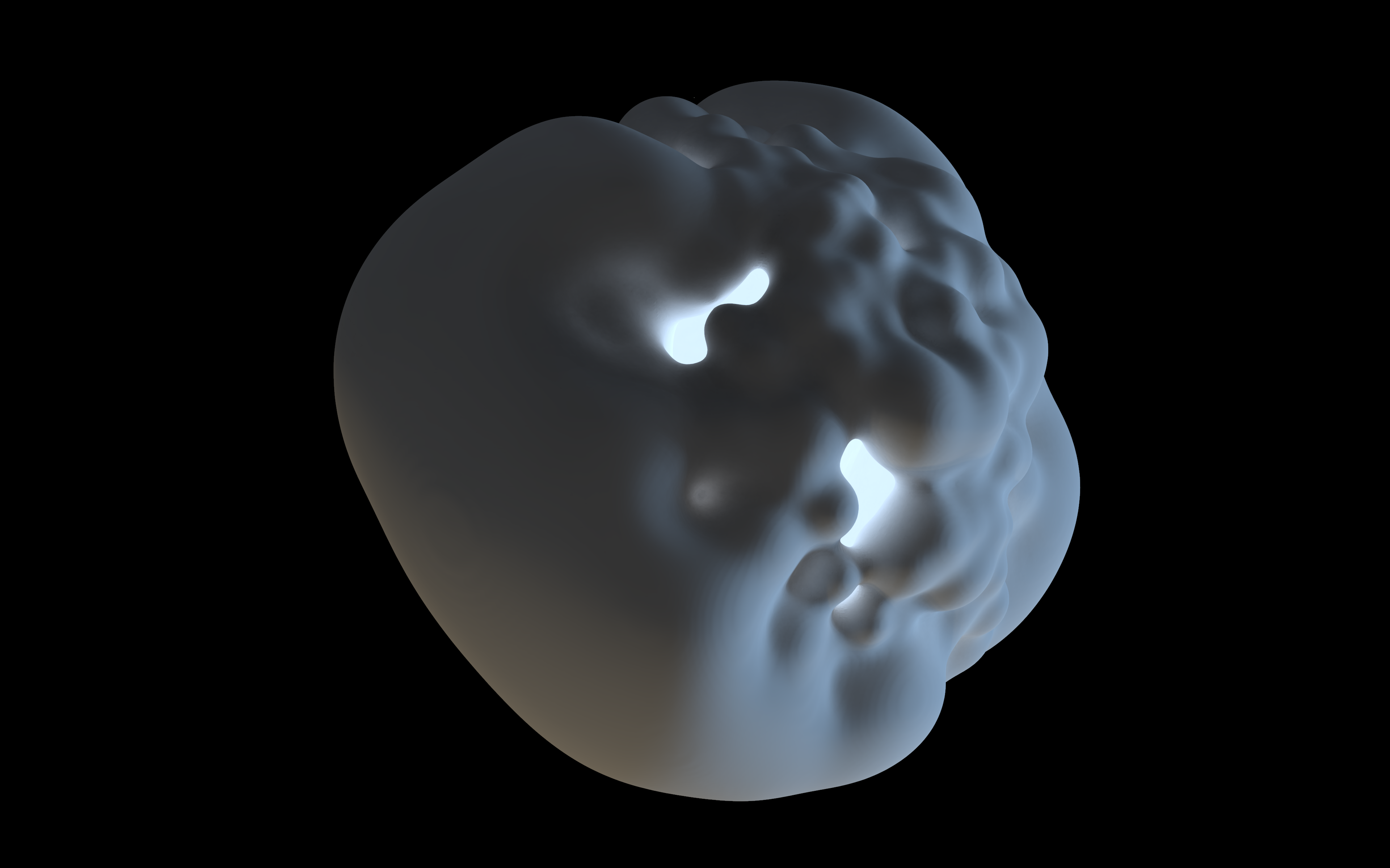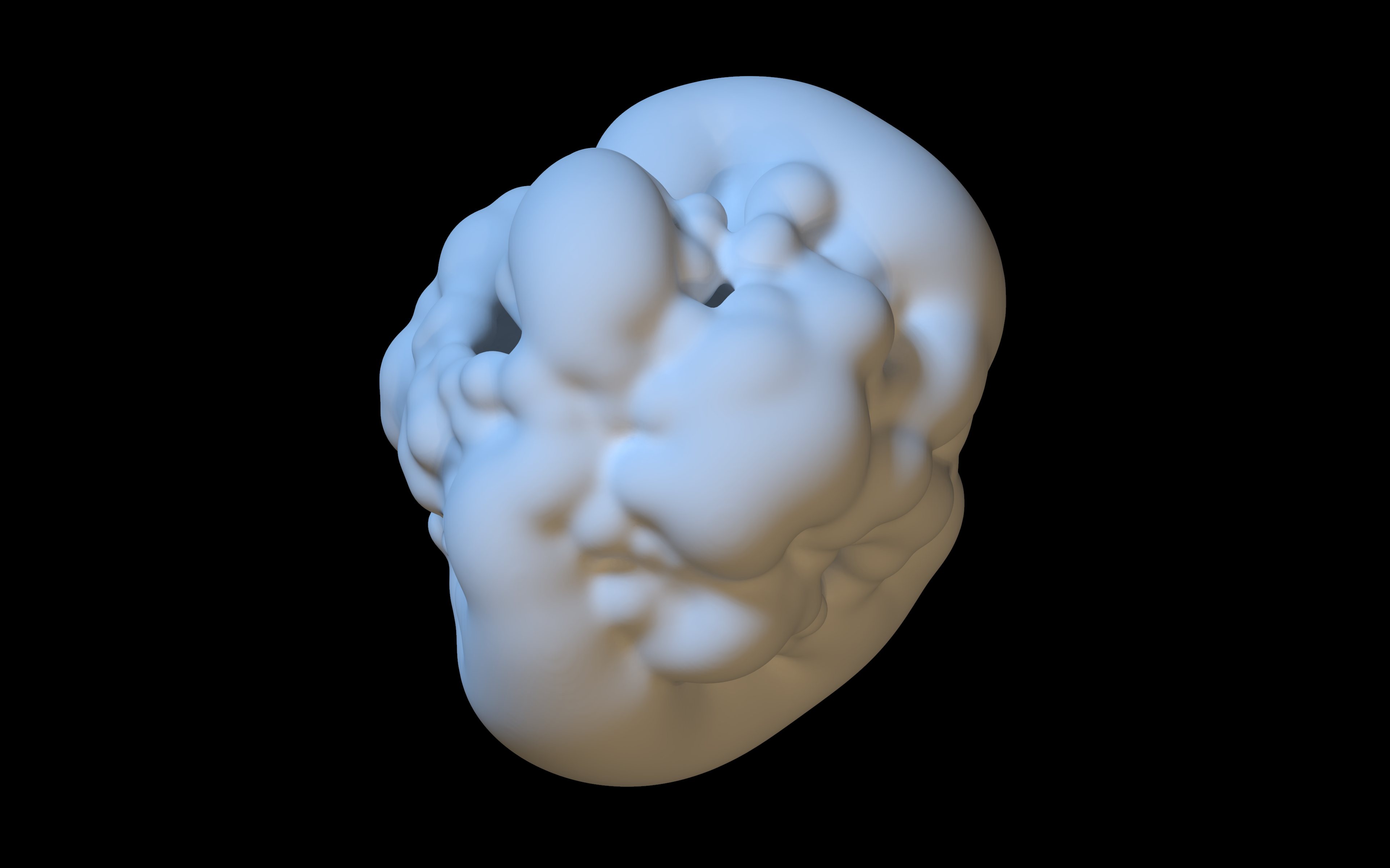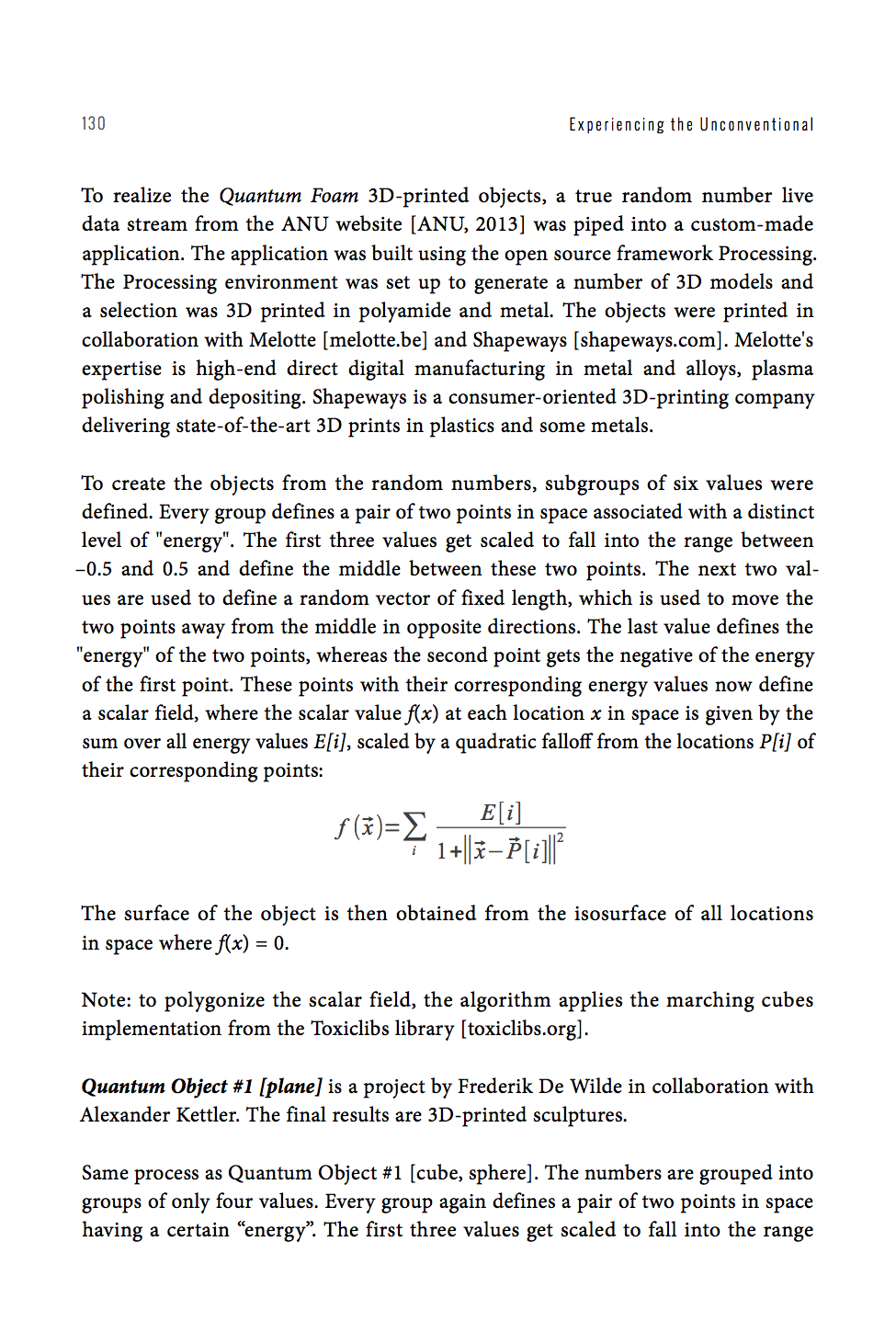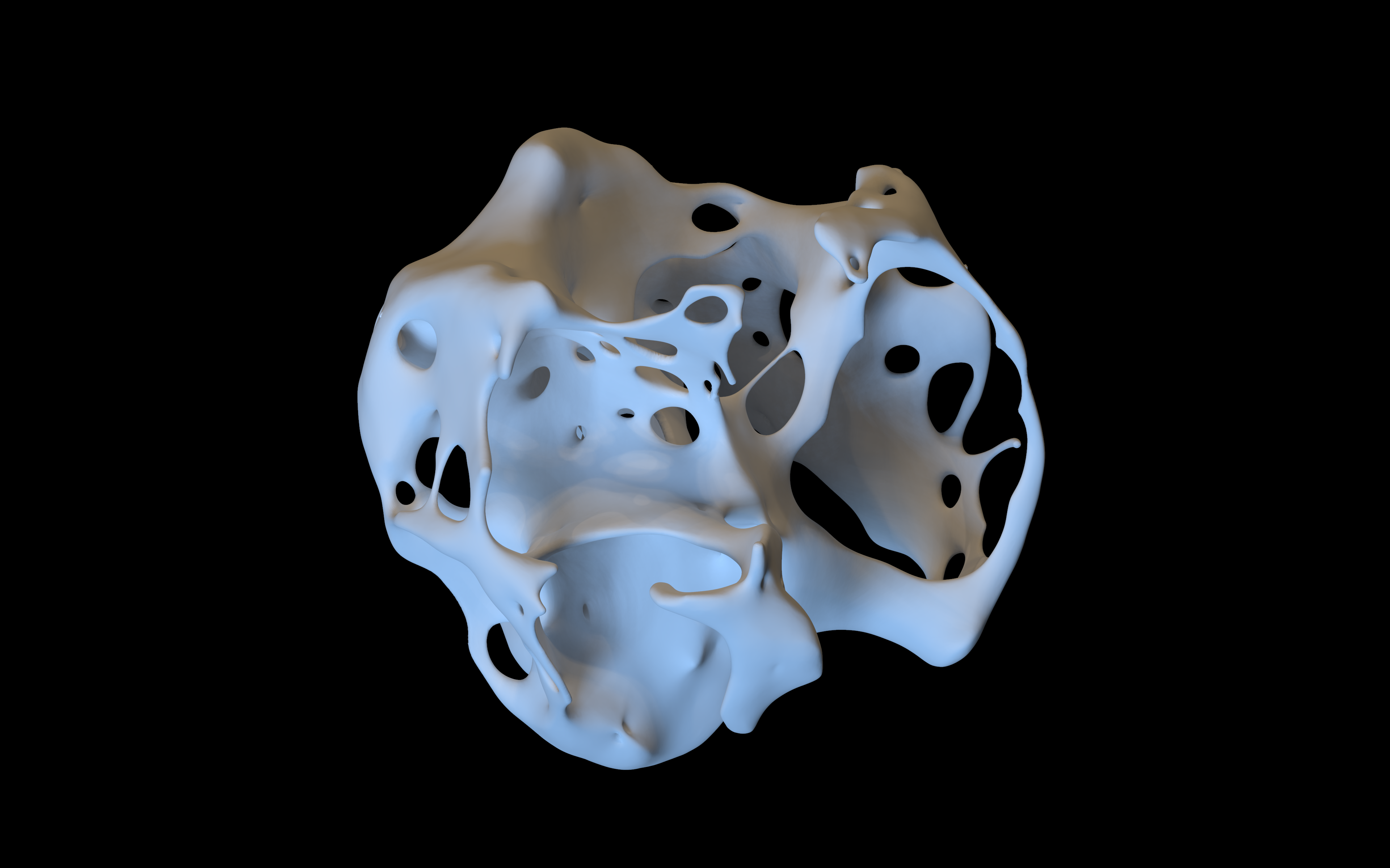Quantum Blob
The quantum vacuum -in contradiction to the classical vacuum- is far from empty. In fact it’s full of ‘life’ and energy (i.e. quantum fluctuations produce virtual matter and anti-matter particle pairs, energetic particles that appear out of nothing). The quantum vacuum is considered as the lowest energy state of the Universe, a sea of potentiality. Imagine quantum vacuum noise as a glass of champagne where you see bubbles appear and disappear all the time.
In collaboration with the National University of Australia’s quantum communication, teleportation and encryption lab, De Wilde tapped into the quantum vacuum and rendered the vacuum noise, generated by a table top experiment with entangled lasers, into true random numbers. These true random numbers were piped into custom made 3D modelling software to create the unique shapes, artistic visualisation of the invisible Universe.
These are quantum encrypted sculptures and a paper written by the artist has been published about the subject (see below). This particular series was made in the 2019, but the first iterations, fundamental research and development of is much older.
◊
Publication
Experiencing the Unconventional: Science in Art Chapter by Frederik De Wilde entitled: “Hacking the Universe,” connecting art and quantum physics/mechanics. This book introduces art projects that resulted from unconventional explorations, curious experiments and their creative translations into sensorial experiences. Using electronic and digital art, bioart, sculpture and installations, sound and performance, the authors are removing boundaries between natural and artificial, real and imaginary, science and culture. The invited artists and researchers come from cutting-edge fields of art production that focuses on creating aesthetic experiences and performative situations. Their artworks create a spatial aesthetic experience for visitors by manifesting themselves in physical space. Experiencing the Unconventional is a unique selection of works by artists not based on formal similarities, but on investigative practices. It offers in-depth insights and first-hand working experiences into current production of art works at the edge of art, science and technology.
Readership: Artists and scientists interested in removing boundaries between their work.
ISBN-10: 9814656852
◊
The sculptures can be produced in different materials and sizes, e.g. copper, nickel, chrome, silver and gold (non-exhaustive list). Each material is de facto a limited edition. Light can be embedded.




